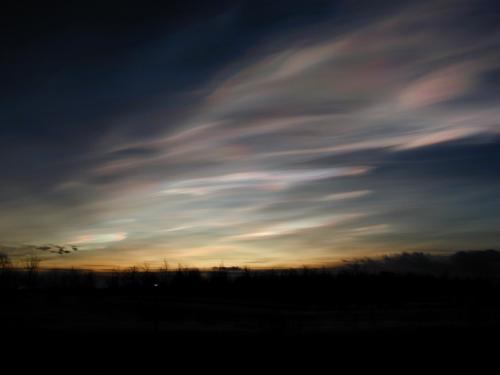Stratospheric aerosols
The structure of aerosols and their impact on the stratosphere depend on several parameters, including the local temperature. When temperatures are not too low (the threshold temperature depends on the types of particles considered, but is situated around -70° Celsius), these particles appear as fine droplets that are known as stratospheric aerosols.
Stratospheric aerosols consist of fine particles in gaseous suspension that are mainly terrestrial (volcanic eruptions) of origin, but also anthropogenic (supersonic airplanes), or cosmic (meteoroids, meteors, meteorites) of origin.
Polar stratospheric clouds and ozone depletion
When temperatures fall below -80° C, as is the case in winter above the poles, these stratospheric particles turn into microscopic ice crystals better known as polar stratospheric clouds. It is the chemical reactions that occur on these clouds that result in the large decrease in ozone during each austral spring over Antarctica (Antarctic ozone hole).
Because of their different physical properties (liquid in one case, solid in the other), aerosols and polar stratospheric clouds have very different physicochemical properties.


